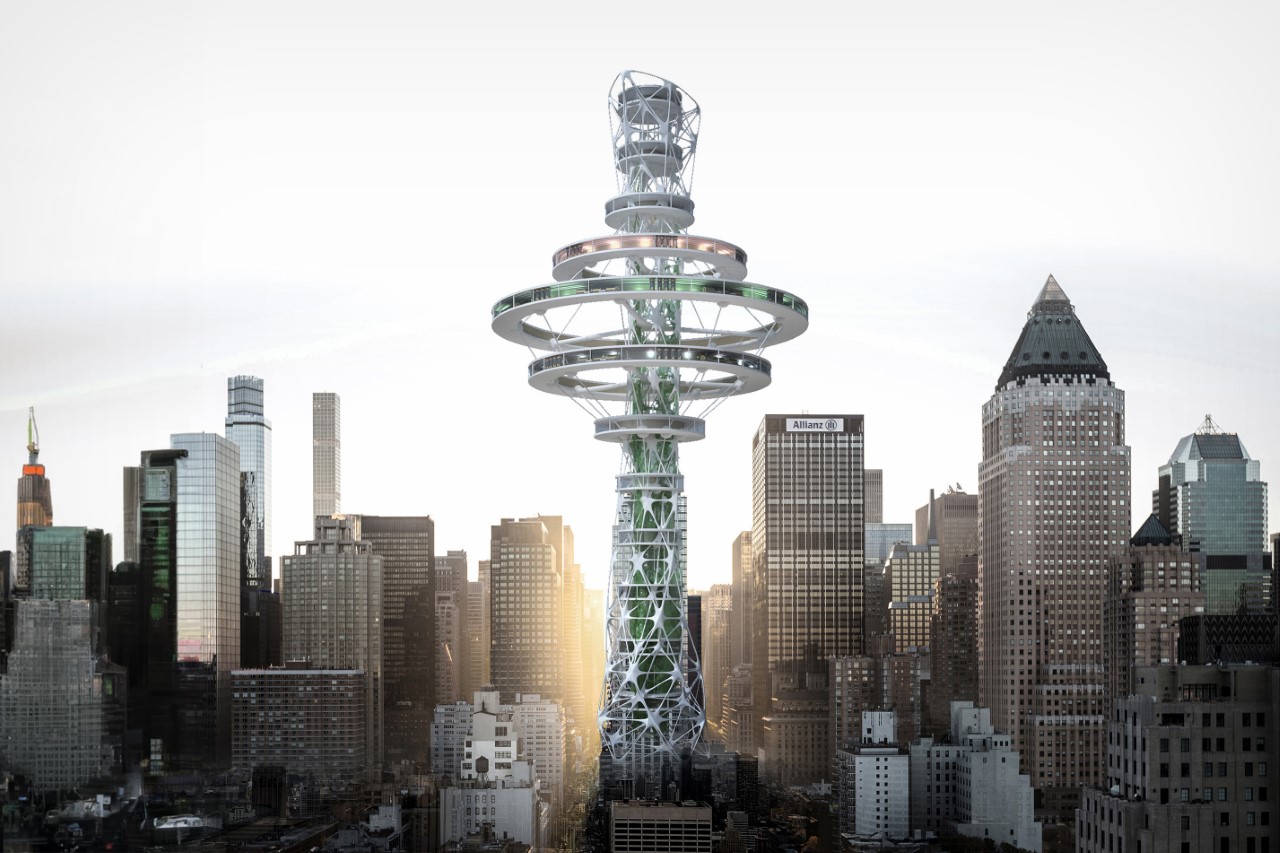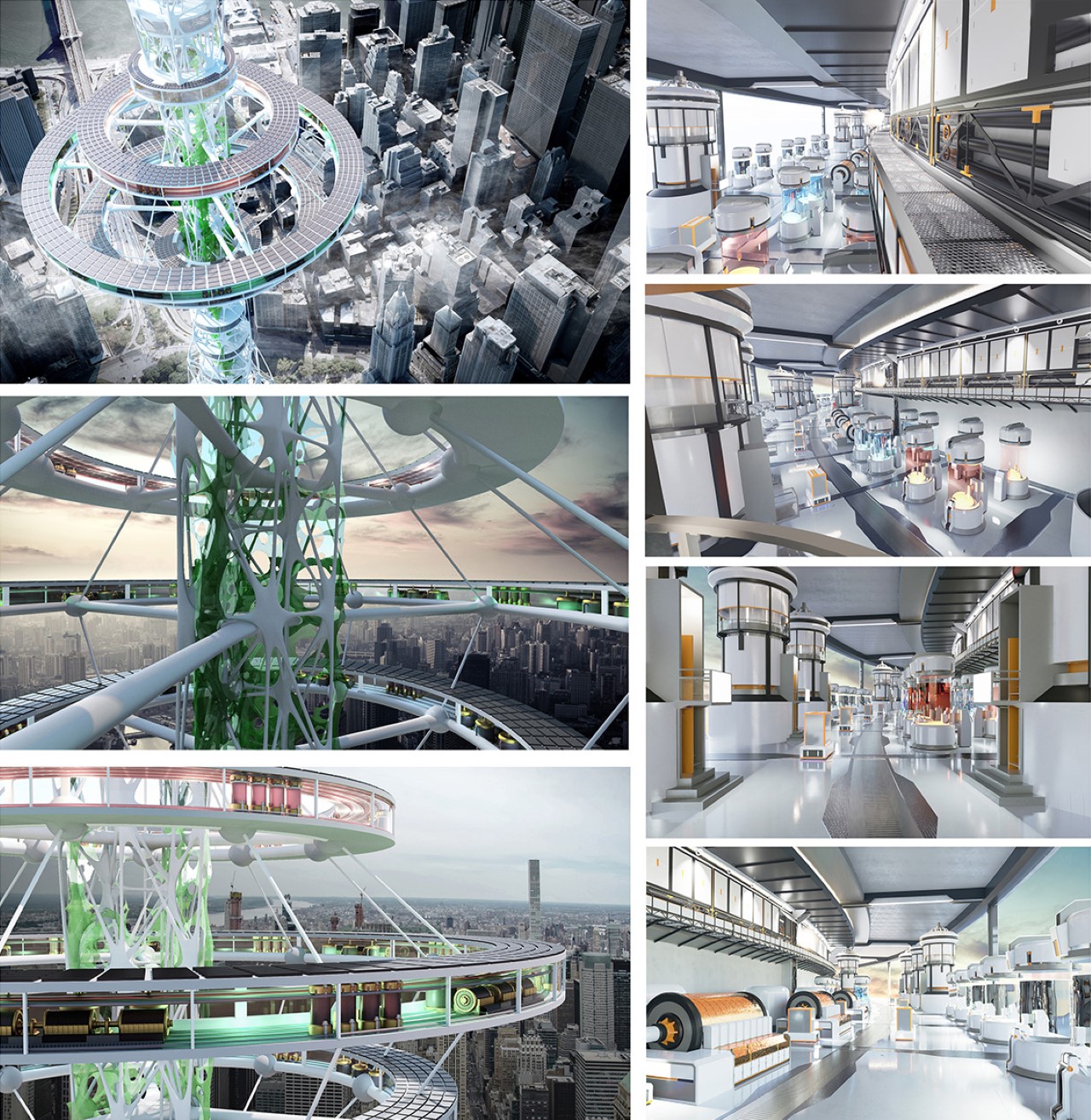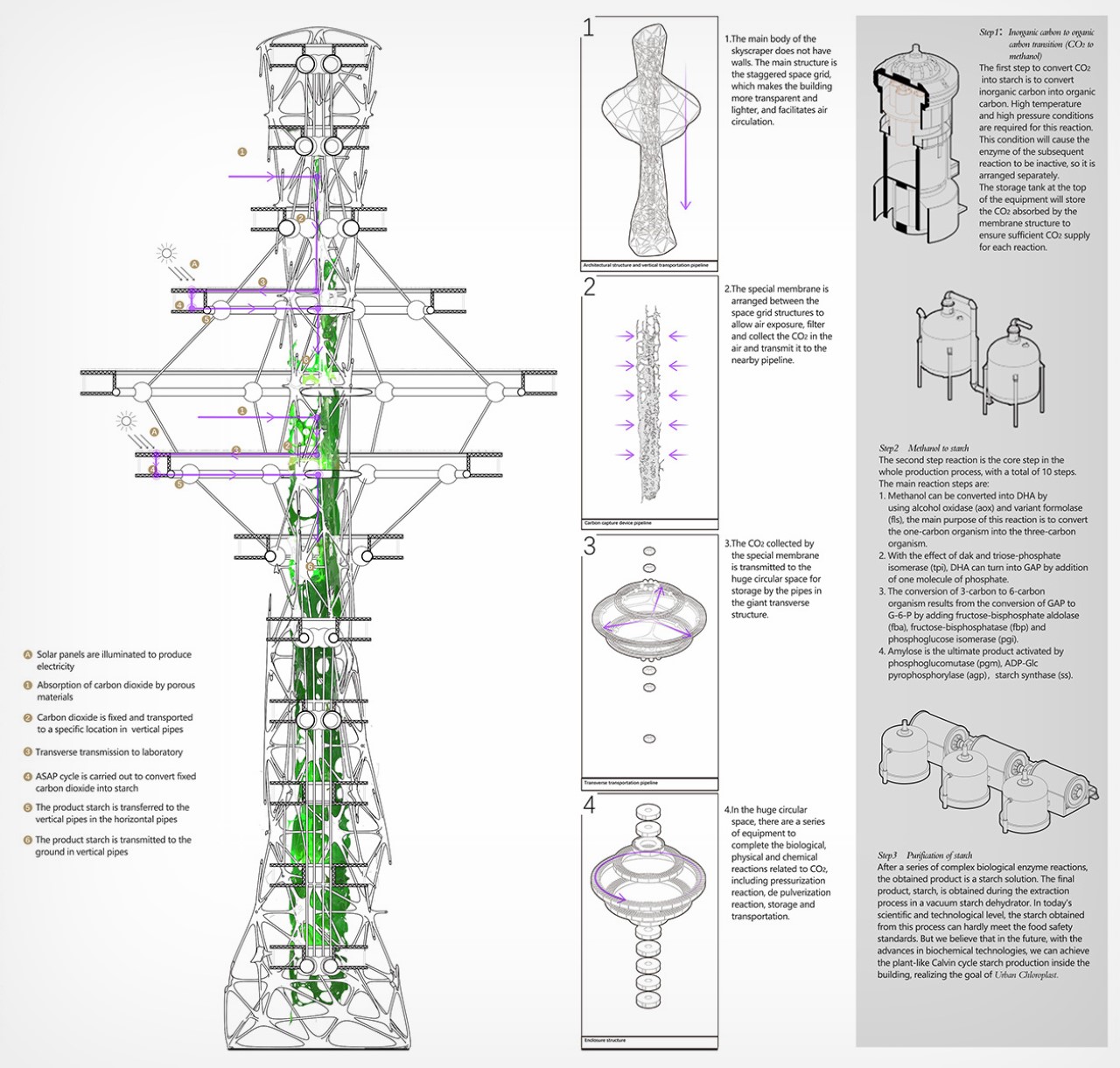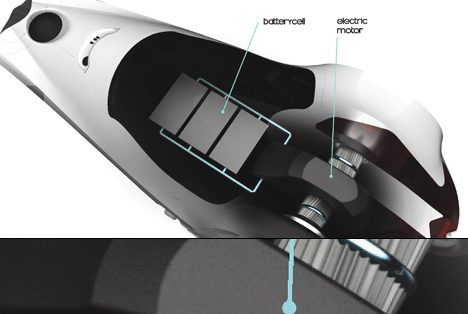
This unique form of carbon capture is the result of a 2021 scientific study of synthesizing starch from CO2. The City Chloroplast skyscraper concept puts this research into practical use, doing the job of a massive plant that absorbs CO2 from the city air on a regular basis.
An entry at this year’s eVolo Skyscraper Contest, the City Chloroplast is a massive carbon-capture device inspired directly by nature. Following the Chinese Government’s proposed policy of “Carbon Peak” in 2030, and “Carbon Neutrality” as early as 2050, the City Chloroplast works by removing CO2 from the air. The CO2 reduced to methanol by a catalyst and then converted by enzymes to carbon sugar units, then to starch. “In our skyscraper design, we designed different parts of the skyscraper, combining the steps and processes of carbon dioxide collection and capture, transportation, storage, and eventually starch production,” say the designers behind the concept. The primary structure of the skyscraper is equipped with membranes that collect and divide CO₂, which will then be directed through a massive transverse pipeline to an expansive circular chamber for storage. A series of devices for the synthesis of starch from carbon dioxide (CO₂) and hydrogen are distributed within the tower’s large annular space, while solar panels located on the top of the tower help provide the clean energy required to power the City Chloroplast’s underlying tech.
Designers: Kaiyu Chen, Yong Lin, Ziyi Li, Zhipeng Tao

In September 2021, the Chinese scientific research team presented a chemical-biochemical hybrid pathway for starch synthesis from carbon dioxide (CO₂) and hydrogen in a cell-free system. The artificial starch anabolic pathway (ASAP), consisting of 11 core reactions, was drafted by computational pathway design, established through modular assembly and substitution, and optimized by protein engineering of three bottleneck-associated enzymes. Although the laboratory method is a long way from being sustainable, energy efficient, economically viable or a replacement for traditional agriculture, it’s a breakthrough in artificially synthesizing starch from CO2, which is a world-first.







